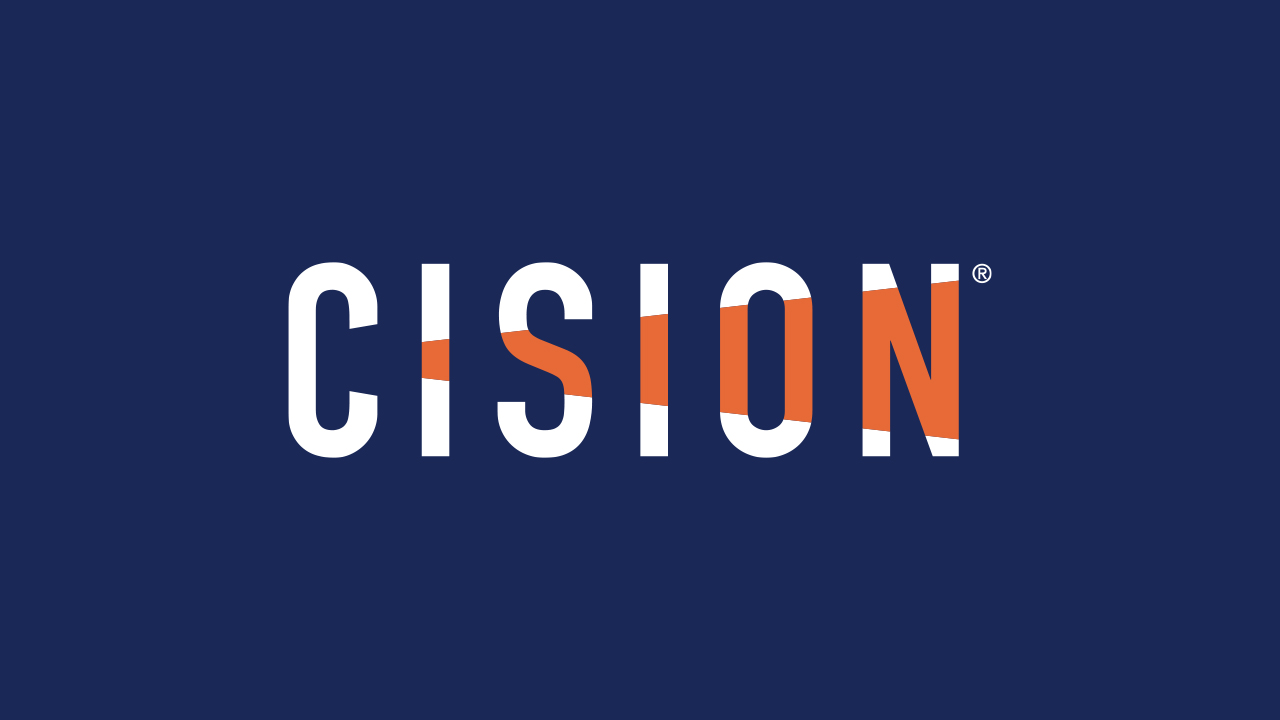A crisis management tool will not automatically resolve a situation when your business or brand encounters problems. However, effective use of crisis management tools can help prevent issues arising, protect you during a crisis, and educate you afterwards on best practice next time.
Crisis management is all about being prepared so that when crises strike you're ready to resolve them.
Now, the key to this preparedness lies in the intelligent use of crisis management tools that help organizations monitor, manage, and mitigate the effects of major problems.
These management tools have evolved to become integral parts of an organization’s resilience strategy. They are designed to assist everyone from lone employees to large crisis management teams in real-time information gathering, provide insights for decision-making, and foster a coordinated response across all levels of an operation.
These tools come with features such as online news and social media monitoring—essential for keeping a pulse on the situation as it unfolds—and reporting capabilities that make complex data comprehensible and shareable among team members.
In the landscape of modern company operations, effective crisis communication is not optional but a necessity.
By integrating with existing workflows and enabling a cross-functional approach, these tools break down silos and create unified frontlines during times of crisis. They are invaluable for protecting brand reputation and dealing with dissatisfied customers.
They also prevent you being caught off-guard. A powerful tool can help you create a blueprint for action that can be seamlessly executed at a time of need.
We'll cover the fundamentals here, but for more comprehensive details on developing a proactive, strategic approach to media monitoring and crisis response, reference Cision's The Complete Guide to Crisis Communication.
Understanding Crisis Management
Organizations generally use crisis management tools to prepare for issues and handle a crisis when it strikes. Management requires a holistic approach. There's nothing worse than an organisation being caught off-guard by a fresh scandal and not knowing what to do about it.
This guide will take you through reputational crisis management that organizations are most likely to encounter. We're not talking about natural disasters here –– a reputational crisis management tool won't help you there! For that, you'll need organisational crisis management software.
Instead, we're focusing on the platforms marketeers and PR pros use to protect against and confront reputational crises when they hit.
Crisis Management Fundamentals
Crisis management is a systematic approach to anticipate, prepare for, and respond to critical events that could harm an organization, its stakeholders, or customers. In business, the fundamental steps in a crisis management process include:
Identification: Recognizing potential crises that could impact your organization.
Preparation: Developing plans and strategies for various scenarios.
Response: Executing the plans with precision during a crisis.
Recovery: Measuring a return to normalcy before assessing response effectiveness.
A crisis management tool aims to facilitate all four fundamentals here, and give users the ability to learn from mistakes and loop those learnings back into their crisis strategy.
Types of Crises
Before we look at the tools available, it's worth us exploring the types of crises that organizations large and small are likely to encounter.
Here's a brief overview:
Product Defects: Most brands have a product they sell to customers. If that product doesn't work then the brand reputation could tank. What's worse is if people have already bought the product. In 2024 Volkswagen recalled 260,000 vehicles over fuel tank issues. The brand team was quick to reassure customers the issue with their vehicles would be fixed free of charge.
Social Interactions: Brands can get in a real muddle when interacting on social media channels. One bad tweet or an ill-timed Facebook post can trigger public outcry that is hard to quieten.
Employee Issues: Employees have private lives outside of their work but a big scandal can impact on a brand's reputation. Crisis management tools can help organisations track brand sentiment around employee scandals. For example, if a CEO is accused of an affair and social media users call for a boycott of the brand, perhaps action needs to be taken.
Ambassador Relationships: Brands can launch amazing products in tandem with celebrities, only to be forced to pull products off the shelves if the celeb messes up. This fate befell sportswear brand Adidas, who went into crisis management mode and ended its seven-year partnership with Kanye West over anti-Semitic comments.
Failed Ventures: Businesses invest in other businesses all the time but not every venture works out. Being able to cease an operation effectively and handle the reputational damage is crucial. In 2018 British newspaper The Sun withdrew its sports betting brand Sun Bets following a $63m (£51m) loss in just two years. The team was quick to erase Sun Bets online and manage the fallout effectively.
Remember, we're not talking about critical events around natural disasters or political upheaval here. This guide is primarily focused on brand reputation, customer support, and the types of platform that support organizations through crises.
Download the The Complete Guide to Crisis Communication, a must-have guide for anyone tasked with brand reputation and management.
Developing a Crisis Management Plan
There are, of course, many more types of crises that can befall an organisation. However, the process for dealing with issues is the same whether it's a major crisis or a small breakdown of internal communications.
It all begins with constructing a crisis management plan…
Components of a Crisis Plan
The six components of a crisis plan are:
Assessment – Identify potential crises and assess their impact on operations.
Prevention Strategies – Outline measures to reduce the likelihood of a crisis.
Response Framework – Detail the actions to take during a crisis
Recovery Plans – Establish steps for returning to normal operations after the crisis.
Communication Guidelines – Set protocols for internal and external communications.
Training Schedules – Plan regular drills and training for the crisis management team.
By covering all six components a team can begin to formulate a full strategy from within a crisis management tool.
Role of a Crisis Management Team
A crisis management team is essential, especially in large organisations, to ensure the smooth preparation and implementation of a strategy. The team may be made up of just one or two individuals, or encompass multiple stakeholders.
Its role is to provide:
Leadership by assigning levels of command within a strategy that people can take orders from.
Expertise by tapping into the knowledge and skills of employees or stakeholder.
Responsibility to set the strategy and outline roles within it, to avoid confusion and ensure efficiency during a crisis.
Communication among all with stakeholders, maintaining transparency and trust.
Training for whomever it is required, in order to maintain a strong level of preparedness.
A robust crisis management plan is your blueprint for resilience, enabling you to navigate through and recover from crises.
Communication Strategies During Crises
It's all good and well establishing a plan but if your crisis communications fail then that plan is worthless.
A core part of any strategy is to establish a line of communication so all stakeholders are aware of decisions being made, who needs to do what, and the potential fallout coming their way.
Crisis Communication Plan
It's important, then, to establish a crisis communication plan that serves as a comprehensive blueprint and provides clear guidelines on how to disseminate information during a crisis. Essential components of the plan include:
Identification of Key Messages: Establishing what needs to be communicated, tailored to the crisis at hand.
Chain of Command: Designating who speaks on behalf of the organization to maintain consistent messaging.
Stakeholder Mapping: Identifying all our stakeholders and considering the best channels for communicating with them.
Monitoring and Updating: Regularly reviewing the situation and adjusting our messages and strategies as necessary.
Role of Social Media
Social Media has become a primary communication channel in times of crisis. It is quick and effective, and much easier to control than issuing press releases to publications, or uploading statements on a company website that no-one will read. Social media channels empower you to:
Monitor Conversations: By keeping an eye on social media platforms it's possible to gauge public perception and respond timely.
Direct Engagement with Stakeholders: You can leverage social media channels to provide updates, rectify misinformation, and offer support during a crisis. This fosters a two-way communication stream.
Amplify Reach: In a social media crisis, it is crucial to quickly disseminate accurate information to a broad audience. This may involve apologising for a misguided post, or even launching a new campaign to counter your bed reputation.
By creating an internal communications plan and planning for external comms on social media, it's possible to control or mitigate narratives during a crisis. Of course, you need somewhere to keep an eye on all this––and that's where crisis management tools come in.
Crisis Management Tools and Software
Crisis management software aims to bring all activities required to plan for and deal with crises in one place. From outlining a response structure to dealing with live issues, it's best if you can do it on one platform.
The features of such software can significantly differ, but ideally you need one that can help with:
Data Analysis: Useful for monitoring situations and providing 24/7 updates, both before crises strike and during them.
Visual Reporting: Necessary for executives to make rapid decisions during crises. The software must provide visual and easily comprehendible reports.
Social Media Monitor: Tools like CisionOne enable real-time tracking of social media, which is critical for gauging the public's perception and reacting accordingly.
Integrated Workflows: Software like CisionOne's Crisis Management Toolkit offers seamless integration with existing systems and support complex team collaboration.
Intelligence Gathering: Gathering data from various sources such as social media, news outlets, radio broadcasts, and even podcasts is paramount for mapping the scale of a crisis.
Responsibility Functions: Being able to manage who does what and when during the time of a crisis is incredibly important. The best crisis management tools allow you to oversee these responsibilities as though they are independent duties within a wider project.
Five Crisis Management Tools
Let's now take a look at three examples of crisis management software that support organizations and individuals through complex crises:
CisionOne
CisionOne's crisis toolkit is designed to aid PR pros and marketing teams execute a quick strategy once a crisis hits. By monitoring millions of articles, social posts, videos, and broadcasts, CisionOne helps users stay ahead of the conversation. If a brand's reputation begins to tank then you can spot it quickly and resolve the problem. Get advice from the toolkit while you develop your crisis strategy and use the CisionOne's powerful features to monitor your industry.
Brandwatch
Like CisionOne, social listening platform Brandwatch allows you to keep an eye on the social pulse and spot when crises are approaching. It's the ideal crisis management tool for brand with large presence on TikTok, X, Instagram, and Facebook who need to plan for a social media crisis. Rebel brands are particularly susceptible to this as they instinctively test the waters, but don't always come out of it in a good light.
Everbridge
A different type of crisis from the ones featured here, Everbridge offers hands-on crisis management when disaster strikes. This can range from coordinating recovery response to organising resource allocation. It excels in managing the reposes to natural disasters and acts of terrorism.
Factal
If you need risk intelligence in real-time then Factal is worth your time. It uses a mix of machine learning and journalists to negative sentiment around your brand and alert you to incoming crises.
Google Alerts
If you need a free crisis management tool for your website then Google Alerts is a good place to look. Get notified when negative comments or search term mentions your brand name. Track search trends around your organization and see what other keywords you're being linked with. Then, respond fast by developing positive content and links as part of a responsive SEO strategy.
Crisis Monitoring and Response
Recognizing a problem early through advanced media monitoring and managing the situation with a coordinated response is crucial to mitigate potential damage. Here are the two sides of any response:
1. Early Detection with Monitoring
Half of your t response to a crisis is to detect issues on the horizon early. This the first line of defense in crisis management, allowing you to detect signs of trouble before they escalate.
Real time media monitoring via tools like CisionOne means you can spot a brewing crisis. This includes:
Detection: Continuous scanning of the media landscape to identify potential threats.
Alerts: Immediate notifications to alert users about unusual activity that may necessitate further investigation.
Analytics: Sophisticated tools to evaluate the significance of the alert.
2. Effective Crisis Response
The second half of crisis monitoring is to implement your response. Response time is critical here, which is why you should use crisis management tools to establish a ready-to-go strategy. This includes:
Coordination: Assembling your crisis management team quickly and efficiently, drawing on your strategy.
Communication: Establishing clear lines of internal and external communication.
Action: Implementing pre-approved messages and response strategies to control the narrative, while assessing it all via your crisis management software.
Post-Crisis Analysis
Crisis management tools can get you through even the toughest of public relations disasters but can't save you every time. It's important in the post-crisis period to analyse and assess the good and bad aspects of your response. That way you can do better next time, and maintain a strong level of reputation management whenever there are bumps in the road.
Learning from Crises
The first thing to do in a post-crisis period is to begin collecting data and analysing your response. Did you achieve what your strategy outlined and how was it managed? Where could you have improved? Was the early warning system suitable and can you identify gaps in the communication chain that need to be addressed?
Places you can get feedback from include:
Team reports: Ask your team members to complete a questionnaire that summarises their views of how a crisis was managed
KPI analysis: Look at how a crisis affected your KPIs, such as negative and positive brand mentions, influencer reactions, or even how a crisis hit your bottom line
Social listening: Use a social listening tool like CisionOne to see the potential damage done to your reputation
News sentiment: Run sentiment analysis across news networks to see how your brand is talked about in the post-crisis period
Strategies for Business Recovery
Once you've collected all your learnings in one place, it's time to strategise a recovery. This is about reassessing your original plan to ensure better practices are in place for next time.
There are two sides to this. The first is to look at your overall products and services, and consider if you need to change anything here. Did the last crisis come about because you're selling a faulty product, or a mismanaged service? Adding preventive measures to alleviate these issues is key, and you might have to redesign what you sell or offer.
The second side is to think about marketing. Is your product great but suffering from a bad reputation? It's very possible that you've endured a crisis not of your own making. In this instance, an effective PR campaign is paramount to repositioning your brand in the eyes of your customers.
To get a better handle on your crisis comms strategy, download The Complete Guide to Crisis Communication.
How Data and Analytics Helps Crisis Management
Data and analytics have become critical tools that enable us to navigate through crises with greater precision and foresight. There are two core components to these tools: data gathering and utilising your analysis.
1. Harnessing Data for Crisis Management
The first step is to gather data. It's the lifeblood of crisis management, particularly for brands dealing with reputational issues.
By aggregating data from various sources, including online chatter, brand mentions, and news sites, it's possible to gather a comprehensive understanding of emerging situations. By monitoring these streams, you gain real-time insights into customer sentiment and broader public perception.
You can use a media monitoring and social listening tool like CisionOne to create a constant data stream that alerts you when a crisis is on the horizon.
This allows us to manage crises proactively by:
Identifying Trends: Drawing connections from diverse data points.
Understanding Impact: Assessing the significance of a crisis on your brand and stakeholders.
2. Utilizing Analytics for Insights
Once you have your data, crisis management tools are able to decipher it into legible analysis. You can then formulate actions based on that intelligence and begin dealing with the crisis at hand.
Two primary ways to use analytics are:
Descriptive Analytics: This includes compiling past and real-time data to understand what has happened during previous crises, allowing you to spot trends and patterns.
Predictive Analytics: By applying algorithms and machine learning techniques, you can then forecast potential future crises or the evolution of a current one.
Best Practices in Crisis Management
It's essential to develop strategic approaches and foster organizational resilience when preparing for crises. Below is an outline of how to integrate these practices effectively.
Develop a Strategic Approach
To ensure control during a crisis, it's important to establish clear strategies.
This begins with situational awareness—understanding what's could unfold and its potential impact on the organization. Say you strike an agreement with an influencer to showcase your new sneaker range on TikTok. The influencer has a huge audience but doesn't always stick to the script.
You therefore need to run:
A comprehensive risk assessment: Identify and evaluate potential risks of working with the influencer to prepare for various scenarios.
A crisis communication plan: Develop and maintain clear communication channels so you can manage information flow during an incident.
Fostering Organizational Resilience
A robust infrastructure is key for an organization to be resilient in the face of crises. This includes:
Preparation and training: Regular training sessions can keep your team ready and aware of their roles in a crisis.
Resources and support mechanisms: Ensure there are adequate resources and support for employees to handle a crisis effectively.
Money plays a big part in developing crisis resources. A newspaper, for example, will keep a pot of money aside for legal costs and payouts in the event they are sued for libel. If you don't have large financial resources then your crisis team may beed to be smarter in their preparation.
Regular Training Programs
A crisis team is only as good as its training. Be sure to implement regular training programs to ensure that our team's intervention skills remain sharp and effective.
Many of these programs are available on crisis management tools and are part of the package you get with subscribing to a platform.
These structured training sessions not only reinforce existing knowledge but also introduce new procedures and protocols that emerge from evolving best practices.
Staying Updated with Best Practices
It's important for a crisis team to stay abreast of the best practices when it comes to dealing with issues. This includes:
Regular Reviews: Keeping track of new studies, resources, and methodologies that can enhance response strategies.
Educational Updates: Enrolling employees in available courses and workshops that focus on the latest tactics and tools for crisis management.
Industry Collaboration: Engaging with similar organizations to share insights and develop new approaches to complex problems.
How to Engage with Customers and Clients
In times of crisis, the approach to engaging with customers and clients centers around maintaining open lines of communication and fostering a relationship grounded in trust and transparency. It's not always easy and many organizations leave the frontline external communications duties to inexperienced employees.
You top priority in a crisis is to effectively communicate with stakeholders, whether they be customers, an audience, or clients. Here are two ways to engage effectively:
1. Outreach and Communication
Being proactive with outreach and communication is crucial in sustaining strong relationships during and after a crisis. A brand that stays silent when problems are unfolding in public risks severe reputational damage and accusations that they don't care.
In practice, outreach and communicate translates to:
Regular Updates: Keeping your audience, customers, and stakeholders informed with consistent and timely information. This might come from responding to negative reviews online, or dealing with a PR incident on news networks.
Accessibility: Ensuring multiple channels are open for dialogue, including social media, email, and customer support, is crucial. Companies often make the mistake of publishing a statement on their website and not realising that no-one will see it. To avoid potential issues it's worth planning an effective, accessible outreach programme.
This dual approach helps to minimize misinformation and address concerns proactively.
Building Trust Through Transparency
Being proactive is one thing but your audience needs to be able to trust you. Companies can appear faceless and untrustworthy if they stay silent during a crisis. Customers and stakeholders need reassurance.
The solution to building and maintaining trust with clients and customers is to use crisis management tools and deliver:
Honest Communication: Present facts clearly without obscuring details, even when the news is less than favorable. A short-term hit to your credibility isn't as bad as the long-term reputational damage of publicly lying.
Accountability: Acknowledge your role and responsibilities, and take action to rectify issues promptly.
Our commitment to transparency is not just about sharing information—it's about upholding the integrity of our relationship with our clients and customers during challenging times.
Future of Crisis Management
The landscape of crisis management is transforming rapidly, driven by advancements in technology and a redefined approach to predictive analysis. Tools help provide a cutting-edge perspective that empower organizations to effectively anticipate and plan for potential crises.
Evolving Technologies
A toolset like CisionOne is ideal for collecting data and managing crises. Real-time data analytics driven by AI is becoming more sophisticated, allowing users to extract actionable insights with greater precision.
The industry is still evolving, while more and more people are entering the digital sphere as smartphones get cheaper and internet access spreads.
The boom in translation technologies, meanwhile, help brands track sentiment across multiple languages and create custom reports that better relate to their audience.
From a team perspective, technological advancements in crisis management tool apps means the right people can receive real time alerts instantly. This reduces reaction time to problems and means they are dealt with more effectively.
Predictive Analysis and Planning
The other big advancement coming soon is crisis planning. Management tools are constantly evolving to better serve users with what they need. Employees are being properly trained and organizations are taking public incidents much more seriously.
Whereas before you could endure a crisis and only a few people who watch the news that night would know about it, these days the impact of social media means crises don't disappear as easily.
In the future, the best crisis management options will center on preparedness and swift responses. Better sentiment analysis will understand whether one negative comment is a catalyst for more to come. With the use of AI you'll be able to respond immediately and accurately to issues, and achieve business continuity in times of difficulty.
Don't forget to download The Complete Guide to Crisis Communication to build an action plan and successfully prevent the fallout of a crisis.








